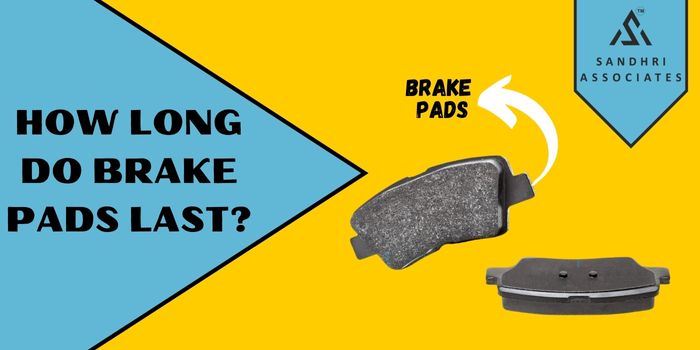Ensuring the durability and efficiency of your vehicle’s braking system is a primary element for both safety and performance. Brake pads are a critical component in the system with a limited lifespan which depends on the various factors.
In this article, we explore things that affect how long brake pads last. You also get some tips that help you in taking care of your brake pads so they work well and last longer. The aim of this article is to give you information to help you drive safely and get the most out of your brake pads.
What Are Brake Pads?
Brake pads are a parts of vehicle which used to stop the vehicle. Brake pads are made up of friction material and attached to the brake caliper. When you press the brake pedal, the caliper squeezes the brake pads against the surface of the brake rotor.
The friction slows the wheels and stops your car. Over time and use, the friction material on the brake pads wears down. When the pads get too thin, they need to be replaced with new brake pads.
Quality brake pads help in ensuring safe, effective braking. Proper maintenance by checking pad thickness and replacing worn pads is important for driving safety.
Why Do Brake Pads Wear?
The brake pads which you have installed in your vehicle wear out over time due to fiction. When you press the brake pedal of your vehicle, the pads press against the rotor, creating friction.
This friction is the main cause of which your vehicle tire stops. So when you push the brake pedal hard it creates more heat and friction, which causes the brake pads to wear faster.
How Long Do Brake Pads Last?
The lifetime of the brake pads depends on several factors your driving style, the condition of the road, the type of vehicle, brake pad material, etc. On average break pads last 30,00 to 70,000 miles. If you drive your vehicle faster and aggressively and also if you are in traffic you will see that your brake pads wear out fast.
Trucks and sports or performance cars need brake pad replacement more often according to the normal vehicle rider. So it’s recommended to have a mechanic inspection every 3-4 months according to your daily running miles.
The brake pads should be replaced when worn down to 3/32 inches. If you ignore that it may be the main reason for the brake failure and long braking distance.
Factors Affecting The Brake Pads Life
The brake pads life depends on various factors and here are some of that so take a glance below:
- Riding Style: Aggressive stop and driving in traffic wears pads faster.
- Types of Driving: City/urban driving wears pads faster than highway driving.
- Vehicle Type: Heavy vehicles like trucks wear pads faster than lighter cars.
- Vehicle use: Sports cars and towing vehicles require more frequent pad changes.
- Brake Pad Material: Ceramic pads last longer than semi-metallic pads.
- Environmental Condition: Cold weather and wet conditions accelerate brake pad wear.
- Maintenance: Lack of proper brake maintenance shortens the life period of brake pads.
- Quality of Pads: Low-quality and cheap brake pads wear out faster than premium pads so it is suggested to go for the OEM brake pads. It is the best decision between OEM vs aftermarket brake pads.
- Timely Replacement: Allowing pads to wear down completely damages rotors.
So, here are some of the factors that affect the brake pads’ life and may also affect your rotors if you ignore the brake pads.
How To Make Your Brake Pads Life Longer?
One of the best ways to extend the life of your brake pads is to drive smoothly and avoid aggressive braking, maintain a safe and longer distance from other vehicles to avoid sudden braking. Avoid riding the brakes on declined roads. Also, check tyre pressure, and replace the brake pads when they reach the 3/32 inch wear limit.
Choose quality brake pads and change fluid recommended to avoid exposing brakes to oil, grease, and fluids. At last change your aggressive riding style to be safe on roads.
How Do I Know If My Brake Pads Are Worn Out?
Listen while driving are there any screeching or squealing noises when braking? Also check for thin, cracked, or unevenly worn brake pads. Worn pads will be less than ¼ inch thick. Excessive vibration or steering wheel shaking while braking can also indicate brake pads.

